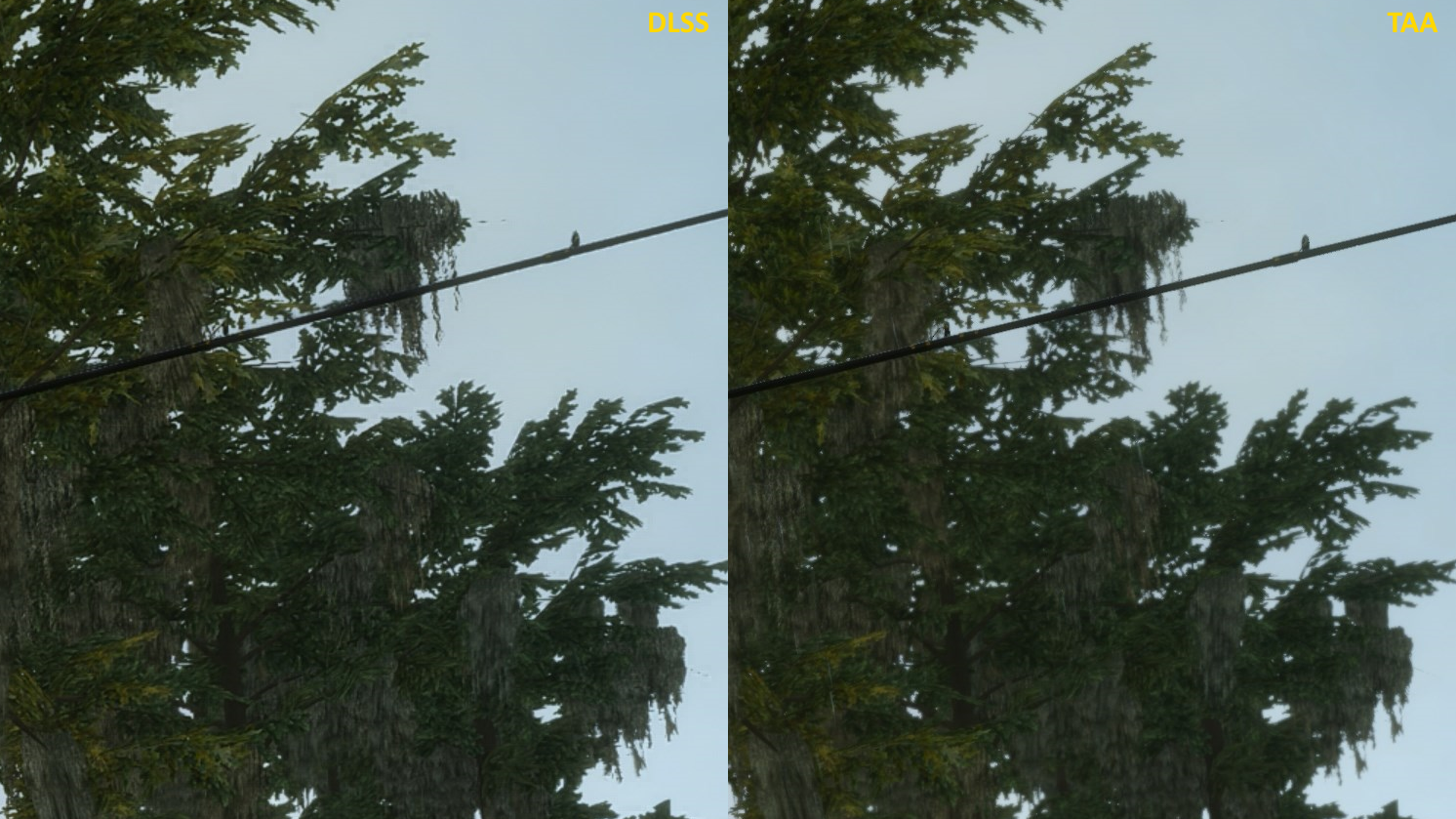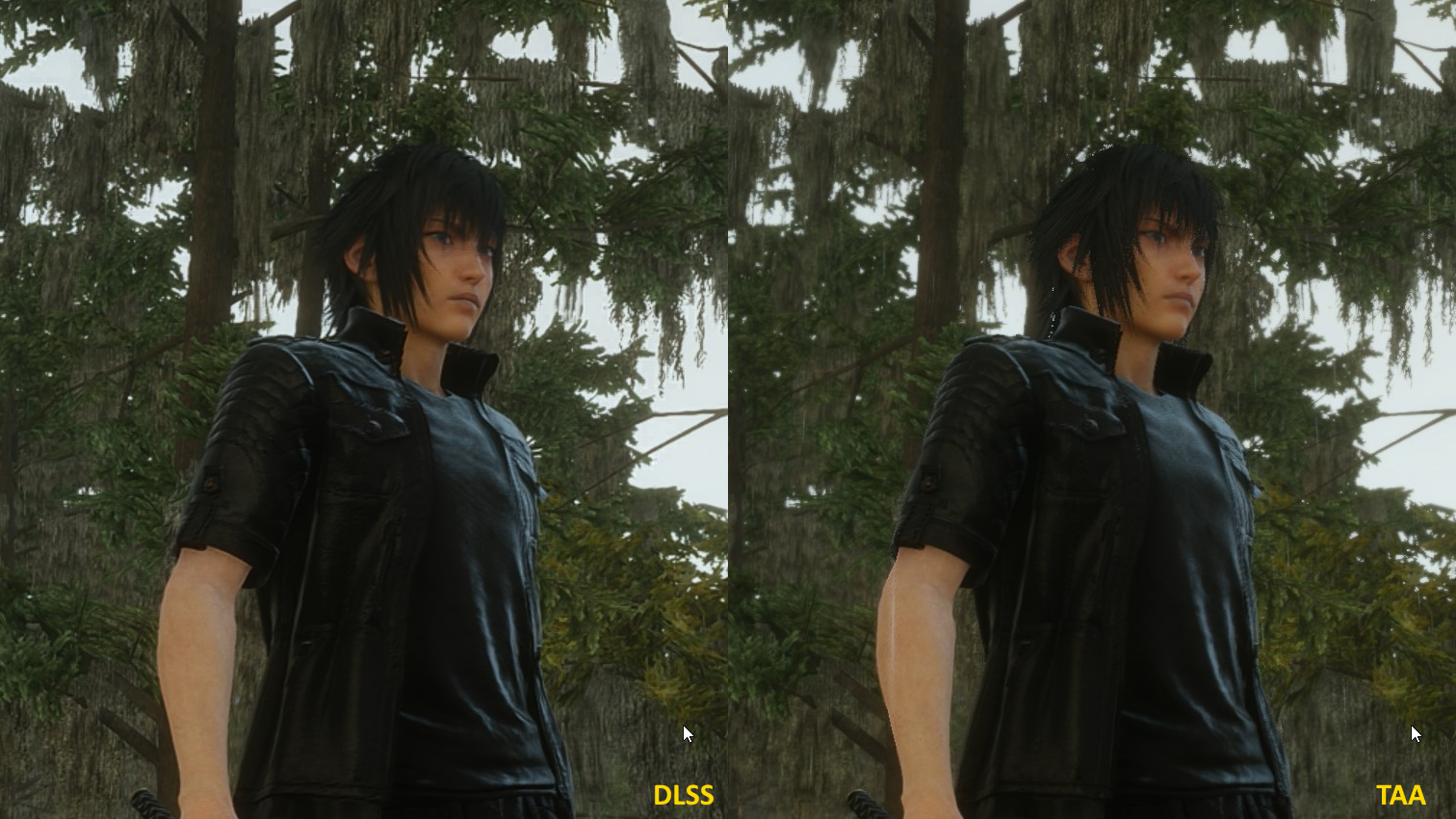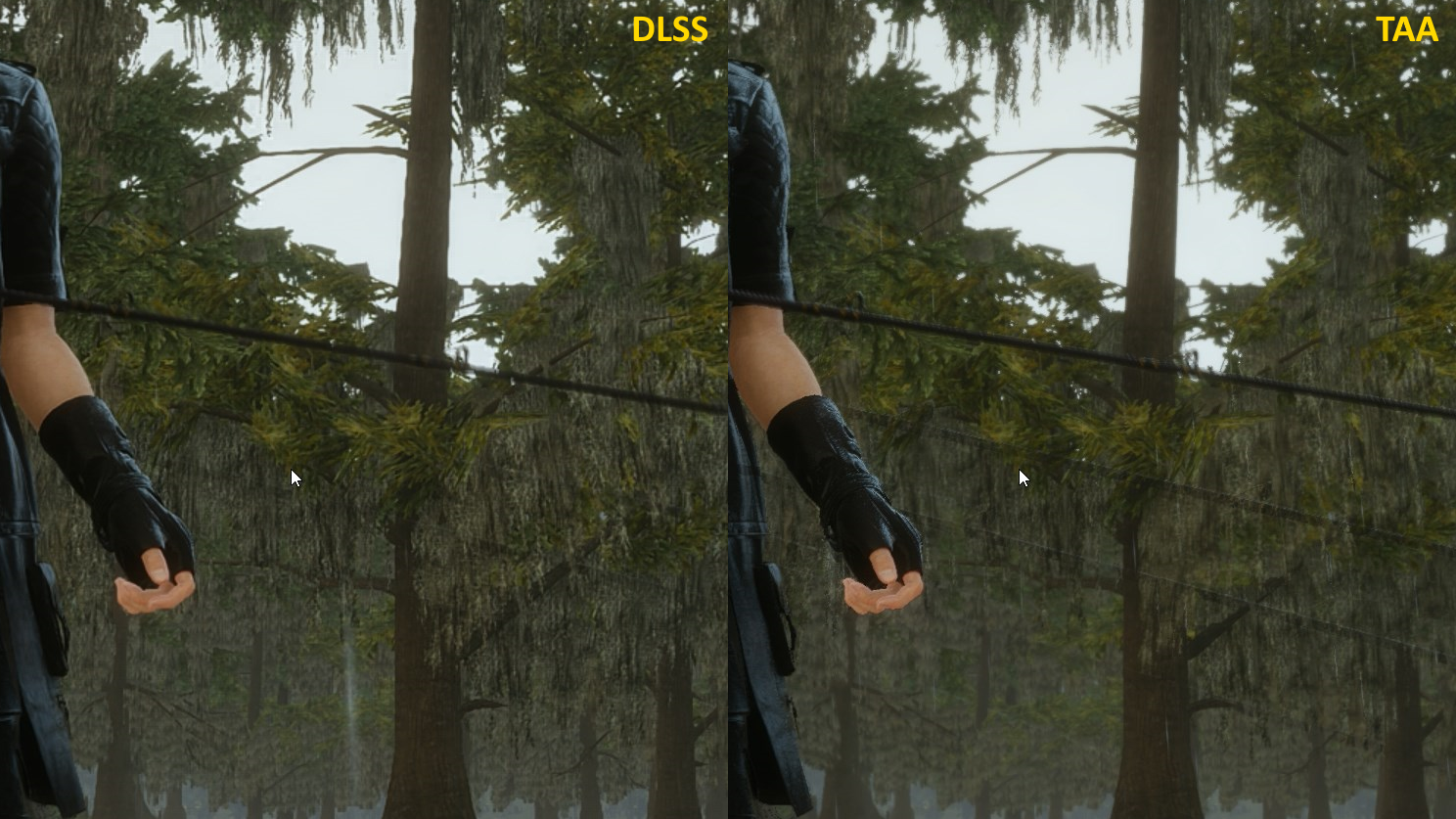Nvidia GeForce RTX 2080 Founders Edition Review: Faster, More Expensive Than GeForce GTX 1080 Ti
Why you can trust Tom's Hardware
Deep Learning Super-Sampling: Our First Taste of Quality and Performance
Before we get into the performance of GeForce RTX 2080 across our benchmark suite, let’s acknowledge the elephant in the room: there are no games with real-time ray tracing to test. In fact, Windows 10 doesn’t even support this functionality yet unless you're in developer mode. Per Nvidia, “DirectX Ray Tracing and Windows ML will be made available to customers as part of the upcoming Windows 10 October 2018 Update.”
We do, however, have access to a demo of Final Fantasy XV Windows Edition with DLSS support. Details of the implementation are somewhat light, aside from a note that DLSS allows Turing-based GPUs to use half the number of input samples for rendering. The architecture’s Tensor cores fill in the rest to create a final image.
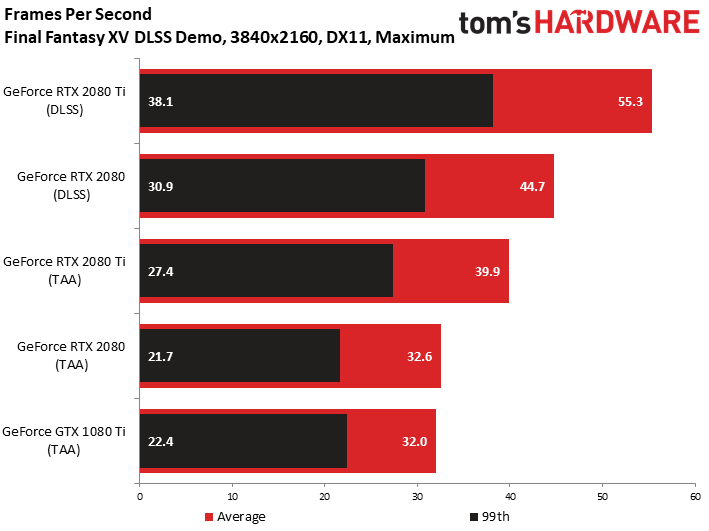
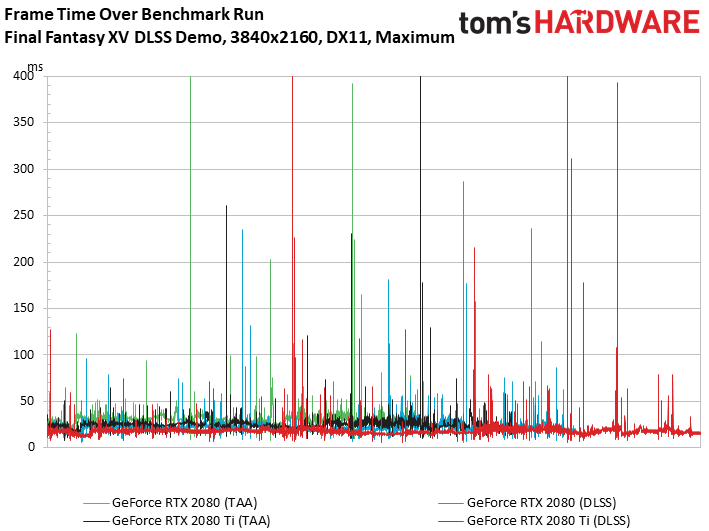
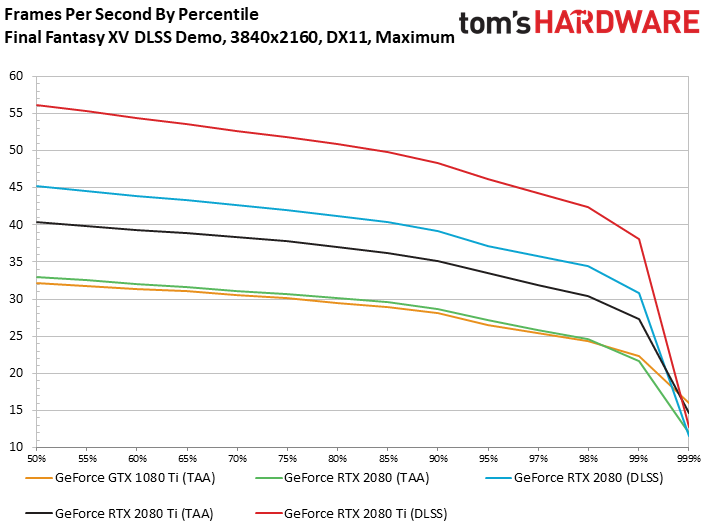
Nvidia says the demo runs at 4K and maximum graphics fidelity no matter what but doesn’t provide any way to see what the quality settings include. The HUD simply shows Resolution: 3840x2160, Graphics: Custom, and a score that increases as the demo runs.
Performance through the demo is most definitely improved by DLSS. The GeForce RTX 2080 Ti picks up a 39% speed-up with DLSS active compared to applying TAA at 4K. GeForce RTX 2080 is 37% faster with DLSS enabled. Otherwise, it’d be roughly as fast as a GeForce GTX 1080 Ti if both cards relied on TAA to combat aliasing artifacts.
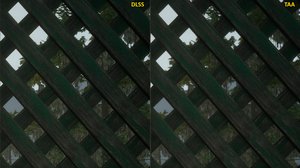
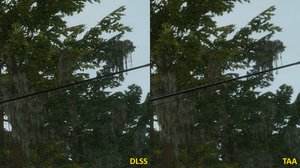
Until DLSS really proves itself, we anticipate gamers distrusting the idea that input samples can be removed to save on rendering budget and then filled in using AI. We pored over the demo, running both versions over and over to identify any differences that stood out.
In the clip below, we make two observations. First, Noct’s textured shirt is affected by banding/shimmering due to DLSS. In the TAA version, his chest does not exhibit the same effect. Second, as Noct casts his fishing rod, there’s a pronounced ghosting artifact that remains on-screen with TAA active. DLSS does away with this entirely. Neither solution is perfect. Of course, we do like that DLSS adds hugely to the RTX cards’ performance results (a GeForce RTX 2080 with DLSS is no less than 40% faster than a GeForce GTX 1080 Ti using TAA).
Might the Final Fantasy’s DLSS implementation improve over time? According to Nvidia, the model for DLSS is trained on a set of data that eventually reaches a point where the quality of its inferred results flattens out. So, in a sense, the DLSS model does mature. But the company’s supercomputing cluster is constantly training with new data on new games, so improvements may roll out as time goes on. If there are areas that demonstrate an issue of some sort, the DLSS model can be reviewed and tweaked. This may involve providing additional “correct” data to train with.
Get Tom's Hardware's best news and in-depth reviews, straight to your inbox.
More than anything, it’s good to get our hands on a DLSS-enabled demo we can scrutinize. As more DLSS-enabled titles become available, you can be sure we’ll spend time adjusting their anti-aliasing settings to compare performance and quality.
MORE: Best Graphics Cards
MORE: Desktop GPU Performance Hierarchy Table
MORE: All Graphics Content
Current page: Deep Learning Super-Sampling: Our First Taste of Quality and Performance
Prev Page GeForce RTX 2080 Founders Edition Next Page High Dynamic Range: Improving Performance and Input Latency-
velocityg4 What? No “just buy it” in your conclusion.Reply
Considering Founders edition usually starts about $100 more that standard edition. Plus, it is new to market. If a 2080 can be had for $100 more than a 1080 Ti. The price is as expected. -
Krazie_Ivan 2080 should have been the 2070, as it barely beats a 1080ti and is the TU104 die. and given the 30mo since Pascal launch, we should almost be looking at 3000 series benches. combine those two with the insane pricing, and Turing/RTX is a huge disappointment. DLSS could be nice and i'm glad Nvidia is pushing for RT development, but there's not enough positives here to justify the costs. $380 2080 / $500 2080ti (and relabel them to match their die codes, like Keplar-Pascal)... otherwise, no thx.Reply -
chaosmassive thank you for your thorough review on these cards,Reply
finally the card has been demystified and indeed for the price is it not worth the buy considering 1080 ti in such a low price..
turned out I dont need ray tracing in my life before I die. -
shrapnel_indie ReplyAfter seeing the GeForce RTX 2080 Ti serve up respectable performance in Battlefield V at 1920x1080 with ray tracing enabled,
Unfortunately, we’ll have to wait for another day to measure RTX 2080’s alacrity in ray-traced games. There simply aren’t any available yet.
Odd... either ray tracing graphics games are available or they're not. You can't test what isn't available for testing... and RT for BF5, last I heard was a zero-day patch... (or was it the modifications to RT that was supposed to improve FPS to acceptable levels.) -
cangelini Reply21333311 said:After seeing the GeForce RTX 2080 Ti serve up respectable performance in Battlefield V at 1920x1080 with ray tracing enabled,
Unfortunately, we’ll have to wait for another day to measure RTX 2080’s alacrity in ray-traced games. There simply aren’t any available yet.
Odd... either ray tracing graphics games are available or they're not. You can't test what isn't available for testing... and RT for BF5, last I heard was a zero-day patch... (or was it the modifications to RT that was supposed to improve FPS to acceptable levels.)
They're not available, but we've seen Battlefield 5 in action with ray tracing enabled ;) -
WINTERLORD wait a minute the 2080 has only one RT core and the 2080 has 72 RT cores? I think there may be an error in the review. update spoke to soon i think that means 1rt cluster...Reply
first page says " TU104 is constructed with the same building blocks as TU102; it just features fewer of them. Streaming Multiprocessors still sport 64 CUDA cores, eight Tensor cores, one RT core, four texture units, 16 load/store units, 256KB of register space, and 96KB of L1 cache/shared memory. " -
jimmysmitty Reply21333069 said:failure, this is a failure.
this gtx20 series looks like it won't be worth it.
I think sales will determine that and if history is anything without stiff competition from AMD I am sure they will sell just fine especially once the AiB cards come out.
21333082 said:What? No “just buy it” in your conclusion.
Considering Founders edition usually starts about $100 more that standard edition. Plus, it is new to market. If a 2080 can be had for $100 more than a 1080 Ti. The price is as expected.
Chris has never been like that.
That said, the pricing should be decent for AiB after a few months. When they launch they get price gouged. Still I would have loved a GTX 1080 price number. That GPU outperformed the 980 Ti by a good margin and was cheaper at launch.
Maybe AMD will come out with something sometime soon. Otherwise we wont see pricing drop. That or AMD will take advantage of the pricing increase and up theirs too.
